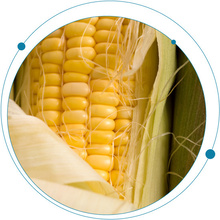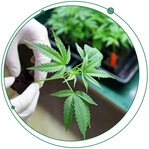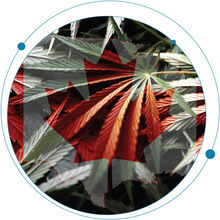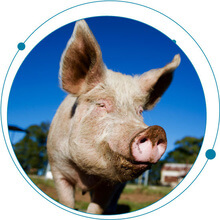The EU Reference Laboratory (EURL) for Fruits and Vegetables in Almería is responsible for a network of around 200 laboratories which provide essential surveillance and monitoring to ensure the safety of foodstuffs available across Europe. The EURL provides proficiency testing and method development for these official laboratories, ensuring rigorous screening to avoid harmful chemicals entering the food chain
Tags

Mycotoxin concerns amidst a pandemic: a discussion on how to optimize your food safety analysis
Read time: 4 Minutes The COVID-19 pandemic has increased the need to store and transport raw and finished food products in order to sustain the richness of the food supply chain. Therefore, having a robust post-harvest support system that monitors moisture levels and...

The honey sting
As a consumer it’s hard for me not to feel inundated with claims that our food is “all-natural” or “chemical-free” or that we should buy certain “superfoods” for their health benefits. We read labels and trust that the product we are buying is what we are truly...
Accurate mass LC-MS/MS for PFAS analysis without needing a blockbuster budget
If you’ve been following our recent blogs, you’ve probably seen quite a bit on how per- and polyfluoroalkyl substances (PFAS) are shaking up both the food and environmental industry. Even if you’ve not been following our blogs, you’ve probably seen a lot of media...

A rising star in food allergen research: proteomics of shellfish allergen
It’s important to know what you’re eating, especially if you suffer from a food allergy.
About 220 million people worldwide live with a food allergy.1 These numbers, along with the complexity and severity of conditions, continue to rise. In America, there are about 32 million food allergy sufferers—5.6 million of those are children under the age of 18.2.2 That’s 1 out of every 13 children, or about 2 in every classroom. From a financial perspective, the cost of food allergy childcare for US families is up to $25 billion

Routine cannabis screening is here. Will your lab reap the benefits?
Fast, accurate, and robust solution for routine commercial cannabis testing
As the world debates cannabis legalization for therapeutic applications and recreational use, the trends are shifting. Medicinal use of cannabis is legal in an increasing number of countries worldwide, including 33 states and the District of Columbia in the United States. Uruguay was the first country in the world to legalize the sale, cultivation, and distribution of cannabis in 2013. In the United States, Washington and Colorado were the first to fully legalize cannabis in 2012. By the end of 2019, 10 states have legalized recreational use for adults over the age of 21, with 64% of Americans favoring the move

Hemp, marijuana, CBD and THC: what’s the difference?
Cannabis refers to a genus of flowering plants originating from Asia.1 It's also an umbrella term that includes both marijuana plants and hemp plants, among others. With the flurry of legalization across the United States, CBD and THC derived products have been thrown...

Mysterious Vaping Detectives Part 2
In our last blog, I gave you some current highlights about the mysterious vaping illness that was making headlines (and still is). The condition now known as, e-cigarette or vaping, product use-associated lung injury (EVALI) has sickened thousands and killed 57...

A year of cannabis in Canada. Where are we and what’s next?
It’s been a momentous year for the cannabis industry in Canada. Not only did the country legalize cannabis with the Canadian cannabis law in October 2018, but it has also taken a giant leap in setting up a multi-billion dollar market from scratch. The progress made...

Your 3 most googled queries about cannabis testing answered
I did some digging on Google and decided to help answer the top 3 most searched queries about cannabis testing methods and technology, for both marijuana and hemp. 1. What equipment should I use to test my cannabis and hemp samples for mycotoxins,...

Boar taint isn’t so simple
The title says it all. Boar taint is a complex subject. For some, it’s not an issue. Others argue that it’s one of the biggest challenges to pork quality. It’s a very subjective response. In her blog, Dr. Laura Hancox illustrates the striking difference between the...
No Results Found
The page you requested could not be found. Try refining your search, or use the navigation above to locate the post.
No Results Found
The page you requested could not be found. Try refining your search, or use the navigation above to locate the post.